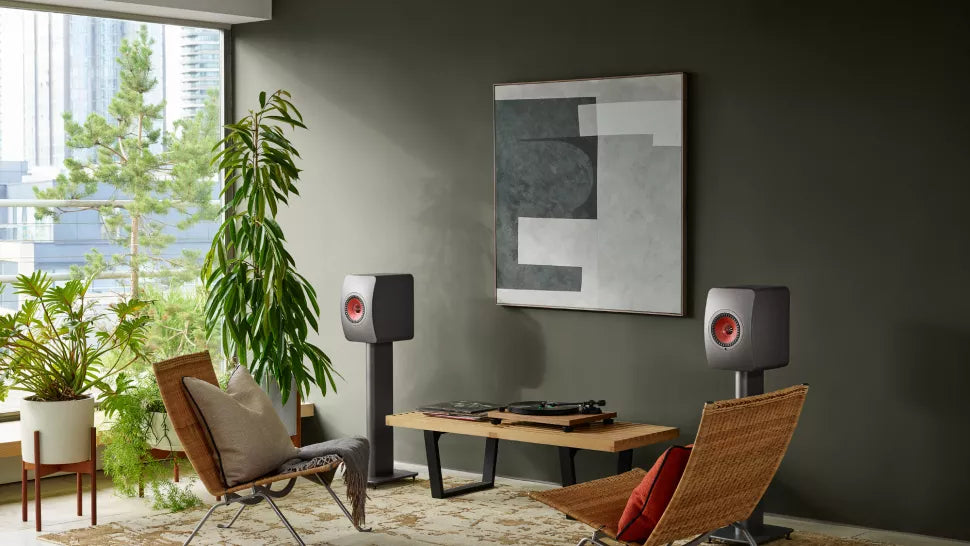How do you choose the right speakers?
The all-too-seductive urge here, of course, would be to head over to our Awards 2022 section or best speakers guide, research the most expensive five-star speaker you can afford, and buy them. After all, if it’s the best we think you can buy at that price, doesn’t it follow that it’s the best for you?
Some of you might strike gold. Some of you will be able to do exactly that and the speakers will slot straight into your system without any problems. But it's always worth doing plenty of research before you buy, and considering certain things while you're auditioning pairs. Even when you've decided on your next pair of speakers, there's still plenty of food for thought when it comes to setting them up properly.
We'll cover all of this and more below, as we take you on the journey of choosing the right pair of speakers, from researching to buying to setting them up in your hi-fi system.
1) Decide on a budget
There are hundreds of bargains out there, especially thanks to the ever-deepening well that is the internet and its myriad purveyors of budget audio, but is that massive discount on what you thought was an incredible piece of hardware actually too good to be true?
Well, perhaps. After all, take that approach to house or car buying, for example, and you could find yourself commuting from your 10-bed mansion in the Highlands of Scotland to London every day, in your McLaren Speedtail. Not an ideal scenario for most people, and a reminder that not only are things not always as glamorous or attractive as they seem, there's also often a reason why a particular item has seen its price drop through the floor.
There’s a distinction to be made between the most and, in a more personal sense, the best you can get for your money, and that’s where we come in. The biggest decision at the start of your speaker-purchase journey does of course concern how much you’re willing to spend. There are some obvious and, hopefully, a few not-so-obvious points to be made here. For instance, you’ll hugely narrow down your search if you establish your budget before seeing what’s out there, rather than the other way around.
You also ought to think about where that budget needs to stretch most.
If you are buying a whole system, there’s no point spending 90 per cent of your money on the speakers, only for them to shine an unforgiving light on all the flaws further up the chain.
Likewise, if you currently own a system you bought for next to nothing at a car-boot sale, that grand burning a hole in your pocket might not be best spent solely on a pair of stunning floorstanders. Take care, though. While frugality and prudence are all very well, there’s also a degree of future-proofing to be considered.
If, for example, you are planning to upgrade other components in your system, you may have cause to reconsider your budget to allow for speakers with the sonic stretch to reveal those upcoming improvements. With a little foresight, shelling out a few extra quid now could save you money in the long run.
2) Measure your room
The next crucial task is to measure your listening room. The space available to you may require or restrict you to a certain type of speaker, and it should narrow your search in terms of positioning.
Most speakers require a degree of free space to perform at their best, so if you can fit them in only close to the wall, you'll need to consider that during your search.
This needn’t impact the quality of the product you end up taking home – there are plenty of sonically tremendous speakers that won’t mind their backs up close to the wall, such as the Elac Debut B2 (which have a front port).
Just remember you’re dealing with sound waves that will be affected by whatever they encounter at whatever distance. If a manufacturer suggests you need two metres between its speakers and a wall, it's best not to push your luck.
3) Floorstanders or standmounters?
Next, think about what type of speaker will suit you best.
You’re going to be looking at either floorstanders or standmounters, sometimes referred to as bookshelf speakers – names that are generally descriptive of their stature – or possibly a subwoofer/satellite combination, pushing the lower frequencies through a sub in coalition with a more easily accommodated pair of main speakers.
As a general rule of thumb, bigger speakers tend to be capable of delivering higher volumes, better dynamics and more bass, though you shouldn’t assume that rings true with every product – it’s all relative.
Further to that, have a think about the volume at which you’re actually going to be playing your music. Are enomously powerful floorstanders going to be wasted on you?
4) Biwired or single-wired?
Many speakers sport four terminals for you to connect your speaker cables, giving you the option of biwiring.
With a single set of cables, all frequencies are propelled toward your speakers together. If you biwire using two sets of cables, your amp can drive upper and middle/low frequency signals separately, with the aim of a purer sound with superior precision.
It may be the case that your amplifier won’t accommodate biwiring, or simply that you aren’t interested in doing so.
If you want to connect using a single wire to each speaker, they come with conductive links between each pair of binding posts, so your music will still reach each driver. But it’s worth bearing in mind that a speaker with only two connectors will remove biwiring as an option in the future.


